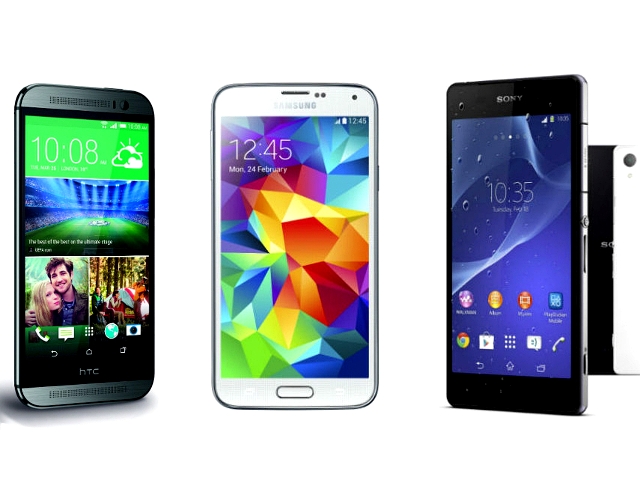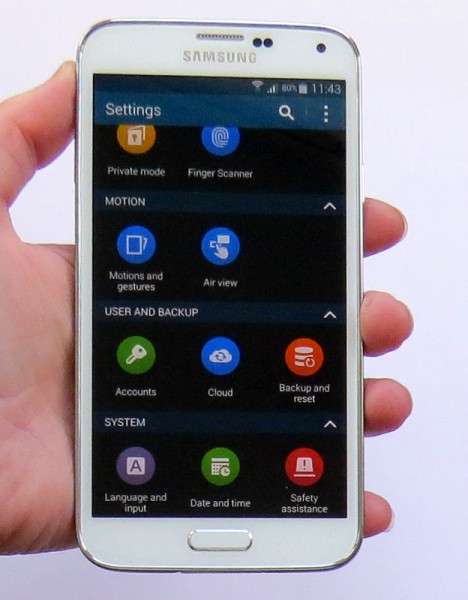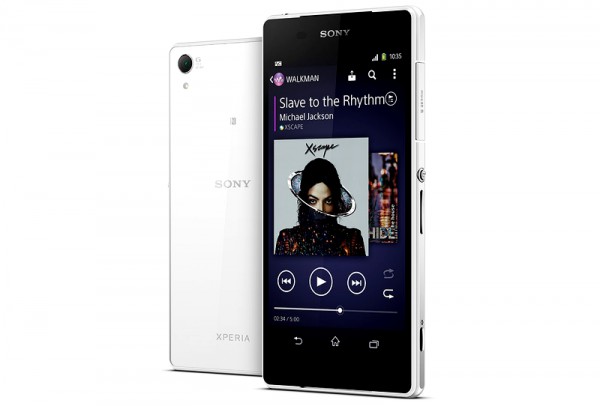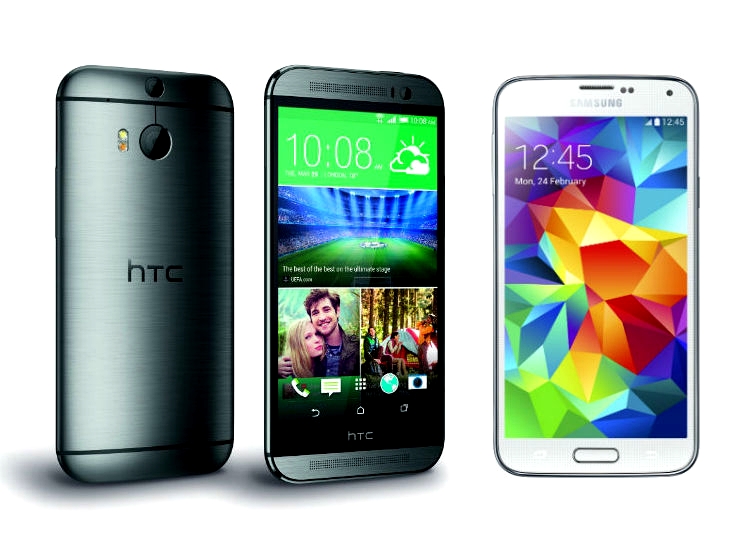Samsung Galaxy S5 vs Sony Xperia Z2 vs HTC One M8

Over the last few weeks Samsung has launched its Galaxy S5, Sony has revealed its Xperia Z2, and HTC has released the One M8. Each of these top flight handsets has its own plus points, and the uniting factor is that they are all vying for your attention if you want to be at the cutting edge right now.
Of course, that will change soon enough. We’re hearing about a possible HTC Prime, and Sony has recently started launching a second flagship handset in the latter part of the year. And other makers will come along with new top of the range phones, too. But for now, those who are after the very best phone they can get have a three way choice. So, is there an obvious best or an obvious worst phone among this trio? Let’s find out.
Design and build quality
These three handsets differ markedly in their respective build quality. The design of the HTC One M8 is simply stunning, with the curved metal backplate looking sumptuous and feeling great in the hand. It is easily my favorite for looks. My least favorite is the Sony Xperia Z2. The glass back does nothing for me aesthetically, and there’s an annoying ridge around the back which I could feel while holding the phone. Dead space above and below the screen does the handset’s looks no favors. The Samsung Galaxy S5 sits in the middle for looks. Its plastic build does not appeal to everyone, but I like it. And plastic makes for a lighter handset than the other two.
The respective dimensions of these phones are 72.5 x 8.1 x 142mm (WxDxH) in the case of the S5, 73.3 x 8.2 x 146.8mm (WxDxH) for the Z2, and 70.6 x 9.35 x 146.36mm (WxDxH) for the M8. The S5 weighs 145 grams, and the Z2 and M8 are heavier at 163 grams and 160 grams respectively.
You can get to the battery in the Samsung but not the other two -- but as I note below, battery life should not be a problem for most of us.
Display
There’s nothing to choose between the screen resolutions of the three handsets, with all of them offering 1,920 x 1,080 pixels -- but there are other differences. The screen sizes vary very slightly, so that the ppi is different for each phone. So, the HTC One M8 has a 5in screen and 441ppi, the Samsung Galaxy S5 has a 5.1in screen delivering 432ppi, and the Sony Xperia Z2 sports a 5.2in screen and 424ppi. To say there’s any real difference here would be splitting hairs, though.

Where you will notice differences is when it comes to display quality. My personal favorite is the Samsung, with a Super AMOLED screen that’s vibrant and sharp, with a color saturation you can change, easily dropping into several pre-set modes. My least favorite, despite the Triluminos, X-Reality and Live Colour LED systems, is the Z2’s display, though you do have a range of controls over the color saturation so you can personalize the vibrancy. The One M8 is clear and sharp, and I could certainly live with it. In many ways, though, this is all a matter of personal taste, and it is fair to say that if you end up with any of these three phones, you will find the display is perfectly good enough.
Processor, memory and battery
One thing that’s been very notable about the launches of each of these three handsets is the lack of shouting about the processor. The Qualcomm Snapdragon 801 is shared by all three phones, though Samsung has gone for a slightly faster variant. Samsung and HTC have plumped for 2GB of RAM, while Sony has opted for 3GB. (See the specs table at the end of this article for all the details).
In everyday use I found all three phones were snappy and responsive, and nothing I could throw at them caused slowdowns or lag. I simply couldn’t fault any of them in terms of performance.
However, I had a major complaint about the Sony Xperia Z2 running hot during my review. I could feel the warmth through the back of the chassis, and on one occasion I spent five minutes working with some of the advanced camera features before I was told the software would close because the handset was running too hot. Not a good sign for photography fans!

Battery life across all three handsets is good, and I would expect most of us to get more than a day from a single charge. This is partly because of much better power management in these new high-end phones, and partly because of high capacity batteries being used. All three handsets have good power saving options for when you are down to the last 15 per cent of your battery, too.
All three smartphones come with 16GB of built-in memory and a microSD card slot. Some of that memory is used by Android 4.4, some by extra apps, and some by the skin that sits on top of Android. So, out of the box, the HTC One M8 has 10.1GB free, the Sony Xperia Z2 has 10.7GB, and the Samsung Galaxy S5 boasts 11.2GB.
Camera
The cameras of these three handsets are arguably where some of the greatest differences lie. Don’t worry too much about the 4 megapixels of the HTC One M8 -- the ultrapixel technology ensures quality is high. Instead consider the secondary rear camera of the One M8 which provides depth of field data for creating some fun effects. They’re not perfect, but photo fans might enjoy playing with them. Samsung can mimic this with a single camera lens, and it shoots 16 megapixel photos. Sony has a 20.7 megapixel camera and lots of fun effects. Just be wary of the potential for the handset running hot that I mentioned earlier.

Software features and sound
Comparing the software features of all three handsets in detail would require a feature all of its own, so let’s look at some highlights. All three phones have Android skins. HTC Sense has been updated to be less in your face than previously, and the dreaded BlinkFeed, which I loathe, has improved features and can be turned off.
Samsung’s skin is visually appealing, and the Galaxy S5 has some interesting new features the other two handsets lack. There’s a heart rate monitor that sits on the back of the handset, and this is part of Samsung’s desire to build its name in the health sector. Personally, I like it. Samsung is the only one of the bunch to include a fingerprint scanner, which is on the physical home button. I’m not such a fan of this but it is easily ignored.
I really like the screen optimization feature in the Samsung Galaxy S5 -- it allows you to reduce the whole screen size to make one-handed use easier. Unlike phones that let you just left or right dock things like the dial pad, Samsung’s effort runs across the whole phone. I found it made using the handset one-handed while standing on the bus really easy. Elsewhere Samsung has de-bloated apps and features alike, but left plenty of goodies intact.
Sony comes last in terms of software features. Oh, there are plenty of them, but it all feels a bit crammed in, complex and overdone. The company’s multimedia stuff -- movies, games and music, are well in evidence and there are third-party apps pushed in here too. Of the three handsets, the Xperia Z2 feels the messiest, most bloated and least well thought out.
Sound quality on the HTC One M8 is really impressive. The stereo speakers deliver great punch and volume. Second best is the Samsung, and Sony comes in third, not just because of the poorer sound quality, but also because Sony majors on multimedia, and I expected a lot more as a result.

And the verdict…
So, where does all this comparing and contrasting get us, and is there an outright winner between the three handsets at present? Well, there are obvious differences between all three phones in terms of design and innards, and some unique selling points for each of them. If you want fingerprint security, Samsung is your choice. If you want premium hardware design and great sound quality HTC wins. If you are already a fan of Sony’s products and like to consume its media offerings, then you’ll want to follow that path.
Personally, I think it’s neck and neck between Samsung and HTC, with Sony bringing up the rear, partly because of the handset design, and partly because I don’t buy into the Sony ecosystem. But you may well have a very different view -- feel free to share it in the comments section below.
For more details on these phones, see my reviews of the Samsung Galaxy S5, HTC One M8, and Sony Xperia Z2.
Specifications comparison
| Manufacturer and Model | Samsung Galaxy S5 | HTC One M8 | Sony Xperia Z2 |
| Network | 4G LTE | 4G LTE | 4G LTE |
| Processor | 2.5GHz quad-core Snapdragon 801 | 2.3GHz quad-core Snapdragon 801 | 2.3GHz quad-core Snapdragon 801 |
| Ram | 2GB | 2GB | 3GB |
| Memory | 16GB | 16GB | 16GB |
| Memory expansion | microSD | microSD | microSD |
| Display | 5.1in, 1,920 x 1,080 pixels, 432ppi | 5.0in, 1,920 x 1,080 pixels, 441ppi | 5.2in, 1,920 x 1,080 pixels, 424ppi |
| Main camera | 16 megapixel | 4 megapixel (ultrapixel) | 20.7 megapixel |
| Front camera | 2 megapixels | 5 megapixel | 2.2 megapixels |
| NFC | Yes | Yes | Yes |
| Wi-Fi | Yes | Yes | Yes |
| GPS | Yes | Yes | Yes |
| FM radio | No | Yes | Yes |
| Battery | 2,800mAh | 2,600mAh | 3,200mAh |
| Size | 72.5 x 8.1 x 142mm (WxDxH) | 70.6 x 9.35 x 146.36mm (WxDxH) | 73.3 x 8.2 x 146.8mm (WxDxH) |
| Weight | 145g | 160g | 163g |
| OS | Android 4.4 | Android 4.4 | Android 4.4 |
Published under license from ITProPortal.com, a Net Communities Ltd Publication. All rights reserved.